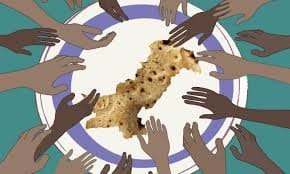
So, How Bad Is It?
According to data from the Integrated Food Security Phase Classification (IPC), it’s bad. Like, really bad. Between November 2024 and March 2025, 64 out of 68 rural districts were in what’s called IPC Phase 3—basically, that’s “crisis” level. And some areas, like Musakhel, are even worse. To put it in perspective, about 22% of the entire population is dealing with serious food insecurity. That’s almost one in every five people.
What’s Driving This?
1. Climate Extremes
Pakistan has been hit hard by climate change—like, punch-you-in-the-gut hard. Remember those massive floods in 2022? They displaced around 33 million people and wrecked over 4 million acres of farmland. Since then, the weather has been unpredictable and cruel. It doesn’t help that Pakistan ranks 8th on the global list of countries most vulnerable to climate change. It’s like fighting a battle you didn’t sign up for.
2. Economic Chaos
Now let’s talk money. Inflation is through the roof, the rupee’s value is sliding, and life’s just getting more expensive. Pakistan did secure a $7 billion bailout from the IMF, but it came with strings attached—like higher taxes, even on agriculture. That’s a tough pill to swallow for farmers already struggling to make ends meet.
3. Agriculture Falling Behind
You’d think in an agrarian country like Pakistan, food wouldn’t be a problem. But here we are. Crop yields are down, wheat production’s lagging, and supply chains are all over the place. The wheat reserves? They might only last until December 2025. Not exactly a comforting thought.
4. Political and Social Turmoil
It doesn’t stop at the economy or the environment. Political unrest and sectarian violence—like what’s been happening in places like Kurram—have made things even worse. When roads are blocked or unsafe, food can’t get where it needs to go. And people can’t get to hospitals or schools either.
Who’s Suffering the Most?
As usual, it’s the most vulnerable—especially kids—who are bearing the brunt. Around 16% of the population is not just food insecure but also cut off from basic health and nutrition services. Malnutrition is becoming more common, and that’s going to have long-term consequences.
Is There Any Hope?
There’s some help coming in, like a $20 billion lending package from the World Bank, and other international aid is trickling in. But here’s the thing: money helps, sure—but without serious reform and better execution on the ground, it’s like patching a sinking boat with duct tape.





